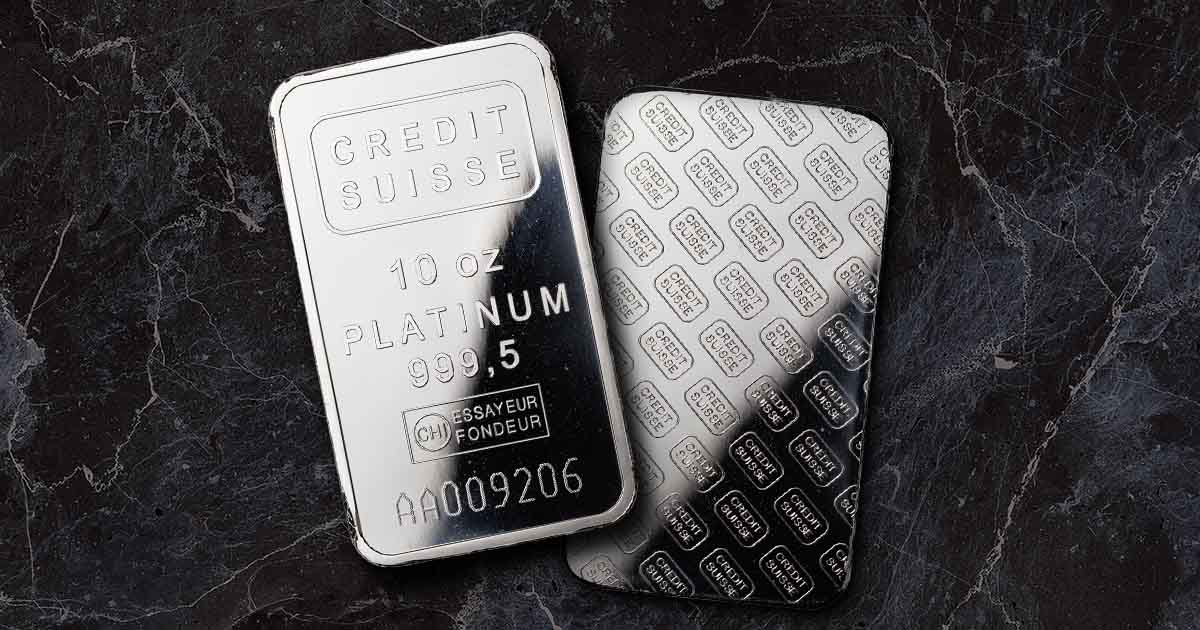
It is believed that there are 80,000 metric tons of platinum on the globe.
There have been about 10,000 metric tons of platinum mined since its discovery in 1741, although it was used by pre-Columbian people, who found it in alluvial deposits. There are an estimated 70,000 metric tons of platinum reserves in the Earth’s crust.
If all the platinum ever produced were compacted into a single cube, it would measure roughly 7 meters on all six sides or just under 23 feet on all six sides.
Where is Platinum Mined?
About 90% of the global platinum supply is found in South Africa, where there are three primary mining operations.
Platinum was first discovered at the Merensky Reef in 1925, and the mine was operational for almost 75 years.
Today, the Platreef, which opened for large-scale operation in 1933, and Upper Group 2 Reef produce most of South Africa’s platinum. The Upper Group 2 Reef began production in the 1970s and is the largest operational platinum mine on Earth.
Top Five Platinum Producing Nations
| Nation | Mine | Percentage of Global Platinum | Metric Tons Produced in 2022 |
| South Africa | Platreef and Upper Group 2 Reef | 74.3% | 140 |
| Russia | Ural Mountains, Taimyr Peninsula | 10.6% | 20 |
| Zimbabwe | Mimosa, Zimplants, and Unki Mines | 8% | 15 |
| Canada | Raglan and Lac des Iles mines | 3.2% | 6 |
| United States | Stillwater mine | 1.8% | 3.3 |
The Scarcity of Platinum
Platinum is exceedingly rare and is found at a low concentration of just 0.005 parts per million in the Earth’s crust.
Platinum is often found in secondary alluvial deposits, which are created by soil deposited in riverbeds. Alluvial deposits of platinum used by pre-Columbian societies in Columbia remain a source for platinum and platinum group metals. Likewise, alluvial deposits in the Ural Mountains of Russia are still mined today.
How is Platinum Used?
Platinum is more ductile than silver, gold, or copper, which makes it the most ductile of all known metals. However, gold is more malleable.
Catalytic Converters
A little bit more than half of all platinum produced is used by the automotive industry, where it is essential for the production of catalytic converters. Platinum is also used in electric vehicles as a catalyst, where it is utilized to produce electricity as hydrogen passes through the platinum, and this electricity powers the motors of the car.
Electric Vehicles
As electric vehicles gain traction, there will be greater demand for platinum as electric fuel cell vehicles require about twice the platinum as combustion engines.
Jewelry
The jewelry industry utilizes about 10% of all platinum produced for its unique qualities. Its white sheen pairs exceptionally well with diamonds, and it is strong and durable, which makes it an excellent choice for daily wear. The metal is non-toxic and hypoallergenic and is not likely to act as a skin irritant like other metals. Platinum is so strong and durable that it outlasts the average human lifespan.
Electronics
Around 7% of annual platinum production is used by the electronics industries in a multitude of applications, including the manufacture of thermocouples and hard drives. It is added to cobalt alloys to enhance magnetic properties, which provides higher-density data storage. Platinum is also employed to coat electrodes, produce cathode ray tubes, and liquid-crystal glass display (LCD) glass.
Glass
The glass industry has used 5% of annual platinum production to craft specialized glass, and this property was discovered before the Civil War. Platinum has an extremely high melting point and is highly resistant to corrosion.
Medical
There are numerous medical applications for platinum, and 2% of annual platinum production is used by the medical industry. Cisplatin, carboplatin, and oxaliplatin are platinum compounds used in chemotherapy to treat types of cancer.




